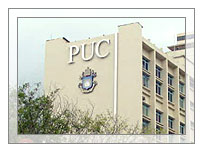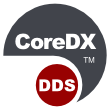Twin Oaks Computing Partners with LAC for ContextNet Project




The Laboratory for Advanced Collaboration (LAC) chose to utilize the Twin Oaks Computing CoreDX DDS University Licensing Program for an ongoing project: ContextNet. Project ContextNet aims at enabling communication services for large and wide scale exchanges, including on-line monitoring or coordination of mobile device activities, and information sharing through social networks. These entities may be users of portable devices (e.g. smartphones), vehicles, or moveable gadgets.
CoreDX DDS is being used to build the backbone of the communication infrastructure for the project, which will run via independent users in diverse network domains. This infrastructure will communicate with approximately 30,000-50,000+ mobile devices simultaneously, each of them sending data every 30 seconds.
ContextNet is primarily focused on addressing three major challenges:
Enabling the scalable distribution of information among hundreds of thousands of context-producing and context-consuming entities
Devising automated reasoning techniques that are inherently distributed and capable of detecting application-relevant patterns of global context situations (e.g. identify over- or underload conditions in the distribution density of the mobile entities).
Using semantic Web to combine several types of context (computing, physical, time, user context) and integrate it with social networks so as to leverage the communication and coordination capabilities of mobile users and/or vehicles.
Working with the LAC for the first time, Twin Oaks Computing supplied the University with CoreDX DDS: the middleware they needed to facilitate communications. CoreDX DDS is a high performance, robust and scalable data-centric publish-subscribe peer-to-peer architecture for real time data distribution. CoreDX DDS provides a wide set of configurable Quality of Service (QoS) policies for tailoring the communication behavior between producers and consumers of data. Some of the benefits of CoreDX DDS include decoupling software components, high availability, interoperability between implementations, and automatic discovery of comparative communication peers.
Currently the ContextNet team is testing the development of this technology. Twin Oaks Computing, Inc. is looking forward to continuing their collaboration with the LAC, advancing communications technologies around the world.
Located in Rio de Janeiro, the Laboratory for Advanced Collaboration (LAC) was formed by the Pontifical Catholic University of Rio de Janeiro (PUC-Rio), one of the top Universities in Brazil. Their mission is to carry out applied research and develop innovative middleware tools and services that advance the state of the art in Pervasive Computing.
Founded in 2005 and located in Castle Rock, Colorado, Twin Oaks Computing, Inc delivered the first version of CoreDX DDS in 2008. We continue to provide world class support to these customers while ever expanding. Twin Oaks Computing is a company dedicated to developing and delivering quality software solutions. For more information about our University Licensing Program, or CoreDX DDS, visit www.twinoakscomputing.com to learn more.
About Twin Oaks Computing
Twin Oaks Computing, Inc. is a company dedicated to developing and delivering quality software solutions. We build the software that collects, manages, and distributes information in a wide range of industries. Our software is in use around the world supporting critical missions.
Super-small and blazingly fast, our flagship product, CoreDX DDS is the leading Publish-Subscribe Data Distribution Service middleware available for small-footprint and embedded systems.
###
Twin Oaks, Twin Oaks Computing, CoreDX DDS are all registered trademarks or trademarks of Twin Oaks Computing, Inc. All other trademarks are property of their respective companies.







